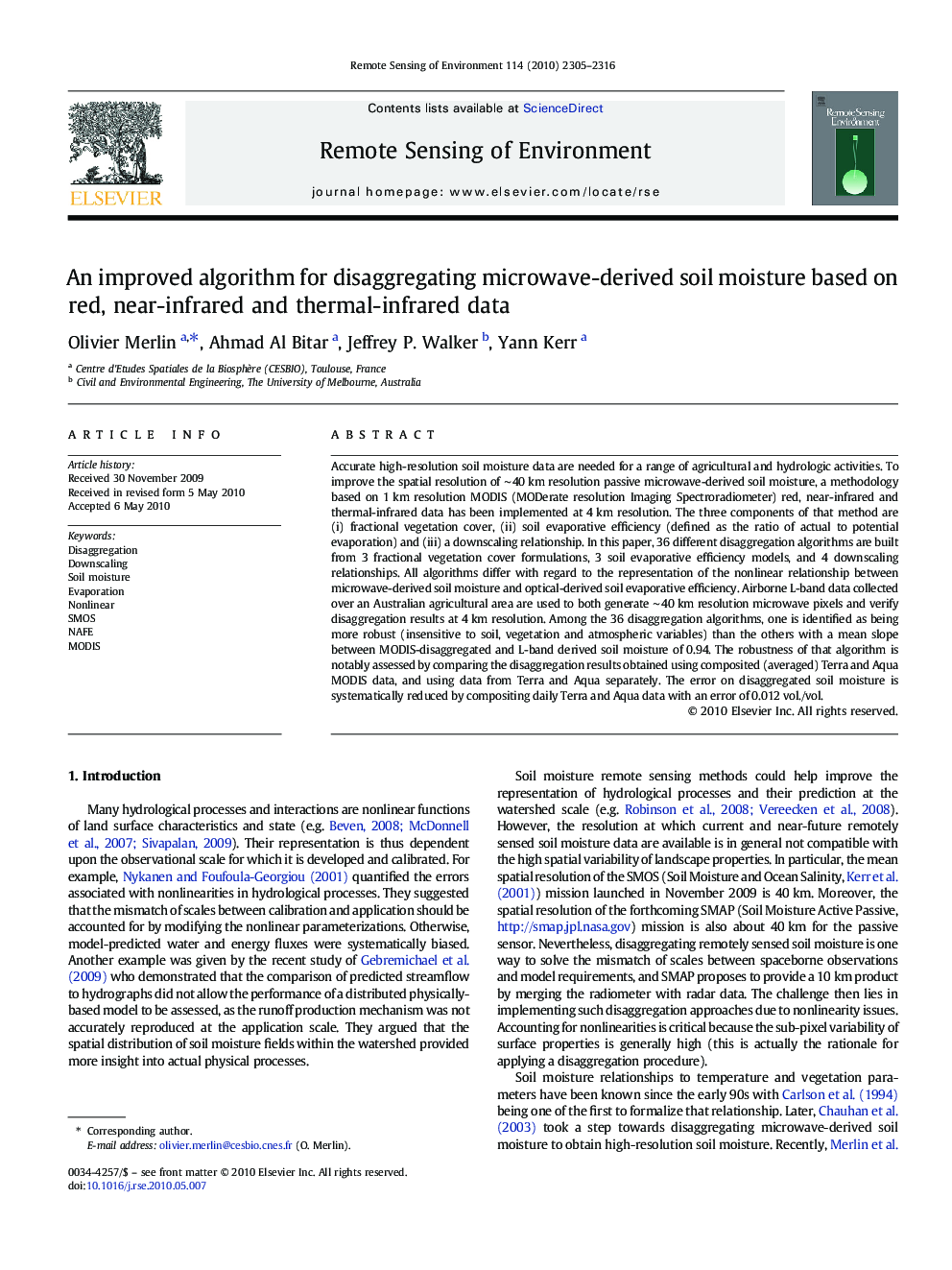| Article ID | Journal | Published Year | Pages | File Type |
|---|---|---|---|---|
| 4459621 | Remote Sensing of Environment | 2010 | 12 Pages |
Accurate high-resolution soil moisture data are needed for a range of agricultural and hydrologic activities. To improve the spatial resolution of ∼ 40 km resolution passive microwave-derived soil moisture, a methodology based on 1 km resolution MODIS (MODerate resolution Imaging Spectroradiometer) red, near-infrared and thermal-infrared data has been implemented at 4 km resolution. The three components of that method are (i) fractional vegetation cover, (ii) soil evaporative efficiency (defined as the ratio of actual to potential evaporation) and (iii) a downscaling relationship. In this paper, 36 different disaggregation algorithms are built from 3 fractional vegetation cover formulations, 3 soil evaporative efficiency models, and 4 downscaling relationships. All algorithms differ with regard to the representation of the nonlinear relationship between microwave-derived soil moisture and optical-derived soil evaporative efficiency. Airborne L-band data collected over an Australian agricultural area are used to both generate ∼ 40 km resolution microwave pixels and verify disaggregation results at 4 km resolution. Among the 36 disaggregation algorithms, one is identified as being more robust (insensitive to soil, vegetation and atmospheric variables) than the others with a mean slope between MODIS-disaggregated and L-band derived soil moisture of 0.94. The robustness of that algorithm is notably assessed by comparing the disaggregation results obtained using composited (averaged) Terra and Aqua MODIS data, and using data from Terra and Aqua separately. The error on disaggregated soil moisture is systematically reduced by compositing daily Terra and Aqua data with an error of 0.012 vol./vol.
